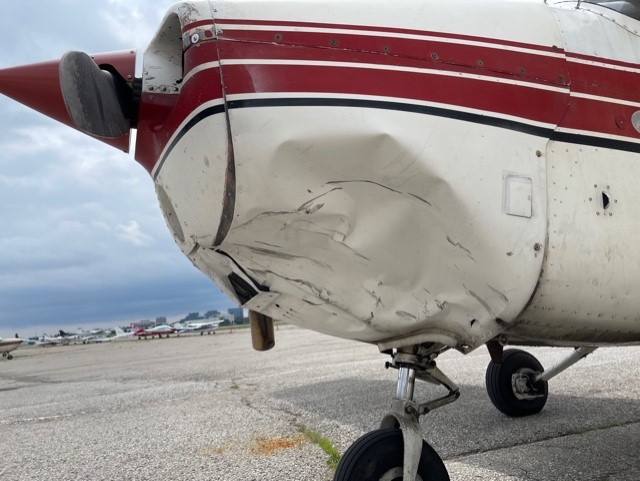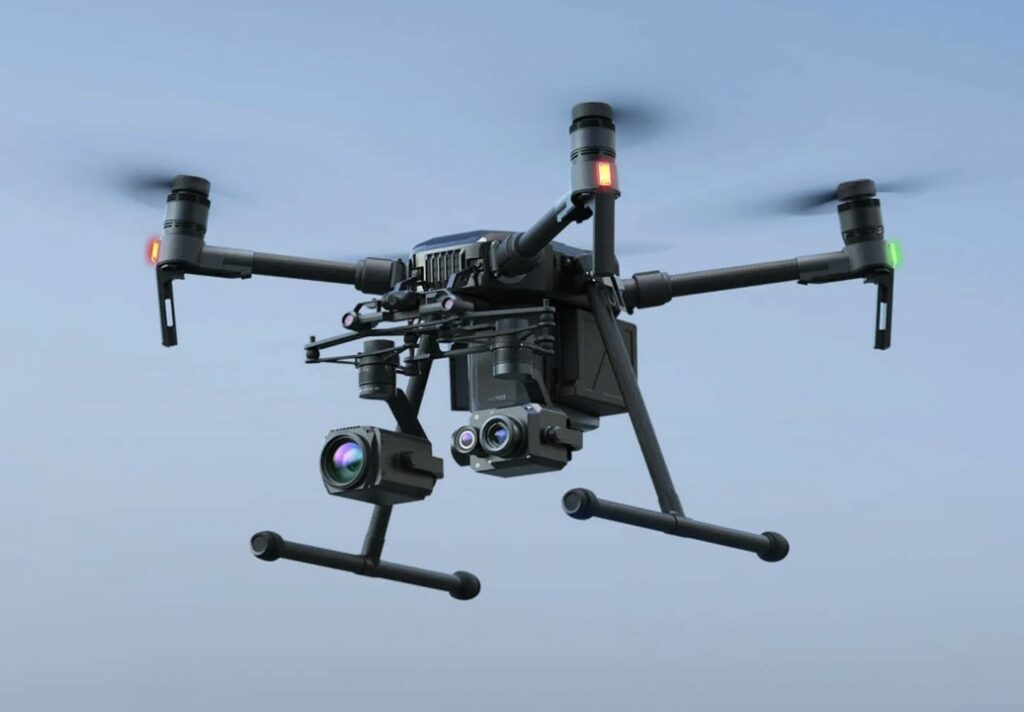Estimated reading time 6 minutes, 21 seconds.
The Transportation Safety Board of Canada (TSB) has released its investigation report into the August 2021 incident where a Cessna 172N, operated by Canadian Flyers International, was struck by a DJI Matrice M210 remotely piloted aircraft (RPA), operated by York Regional Police, while on final approach into Toronto Buttonville Municipal Airport (CYKZ).
The investigation found that several factors contributed to the collision, which left damage to the Cessna (C-GKWL) and destroyed the drone entirely. The first was that the student pilot and flight instructor on board the Cessna aircraft were “unaware of the presence of airborne RPA traffic in the vicinity and, due to several factors, the active scanning that is part of the see-and-avoid principle was unsuccessful in identifying the conflict,” the report states.
Second, while the drone was being operated by a pilot on the ground, and a visual observer was present, “the York Regional Police policy does not require that visual observers be trained crew members, and the RPA pilot did not brief the visual observer on his role and responsibilities before the operation.” Ultimately, the visual observer did not know about the requirement to maintain visual line-of-sight with the RPA, and was also not trained in visual scanning techniques or aircraft identification.

Lastly, the investigation determined that the drone pilot was likely “task saturated,” as he was observing the status of the RPA, operating its camera system, and “communicating on multiple channels.” As a result, his visual reference of the drone and ability to hear radio calls on the control zone’s mandatory frequency were lacking.
With a combination of the above factors, “the conflict went unrecognized and the two aircraft collided,” the report concludes.
What happened?
According to the investigation report, the Cessna pilots were on final approach for Runway 15 at CYKZ at the same time that the RPA pilot began his second flight. The purpose of the RPA flight was to “conduct a reconnaissance of the operational area, including attempts to locate a potentially armed individual,” the report reads. The drone was flown to a height of 400 feet AGL, and was in a stationary hover under the approach path for Runway 15 in order to “provide the necessary imagery.”
The Cessna pilots made the appropriate radio calls to join the right-hand downwind for Runway 15, and no other traffic was broadcasting on the CYKZ mandatory frequency at the time. The report says “the pilots were actively scanning for other aircraft in the area and did not see any.” (Weather was not considered a factor.)
However, approximately 1.2 nautical miles from the threshold, the Cessna pilots felt a “solid impact,” which they assumed was a bird strike. There was no change in the aircraft’s configuration or power, and they were able to proceed with a normal landing. No injuries were reported.
The collision caused damage to the Cessna’s left lower engine cowling and carburetor air-box, and there were minor scratches on the propeller. The RPA was completely destroyed.
According to the TSB’s report, the RPA was equipped with an Automatic Dependent Surveillance–Broadcast (ADS-B) receiver, but the Cessna aircraft was not. If the Cessna had been equipped with ADS-B, the RPA would have picked up a signal from the Cessna and alerted the RPA pilots with a traffic warning.

The Cessna was also not equipped with a flight data recorder or a cockpit voice recorder, though neither device was required by regulations.
The RPA, however, was equipped with an onboard memory card, which held “useful” data about the drone’s flight parameters.
While there were no injuries from this particular collision, the owner of Canadian Flyers International noted that the strike could have been far more serious and could have resulted in loss of life.
Following the incident, York Regional Police “amended its directive to include the addition of a pre-flight risk assessment tool, and an updated RPA pilot checklist.” Additionally, the visual observer for RPA operations will now receive a “quick reference card” that outlines their roles and responsibilities.








